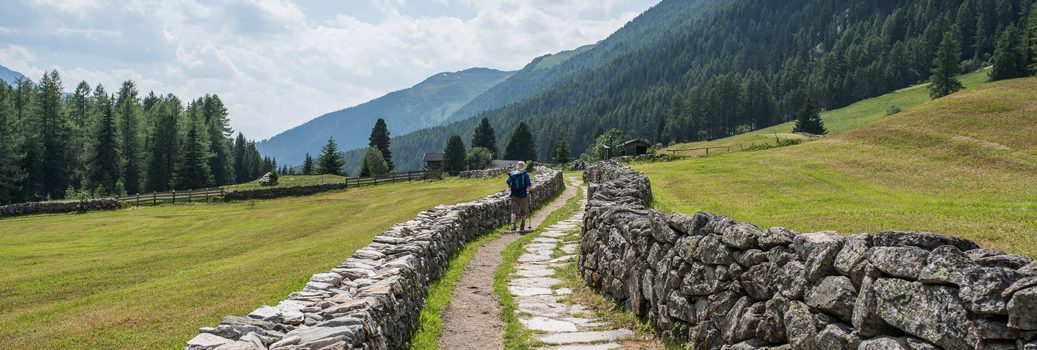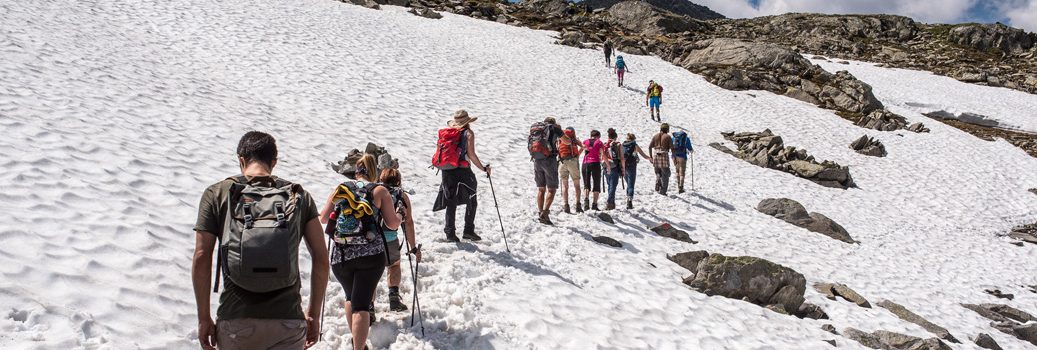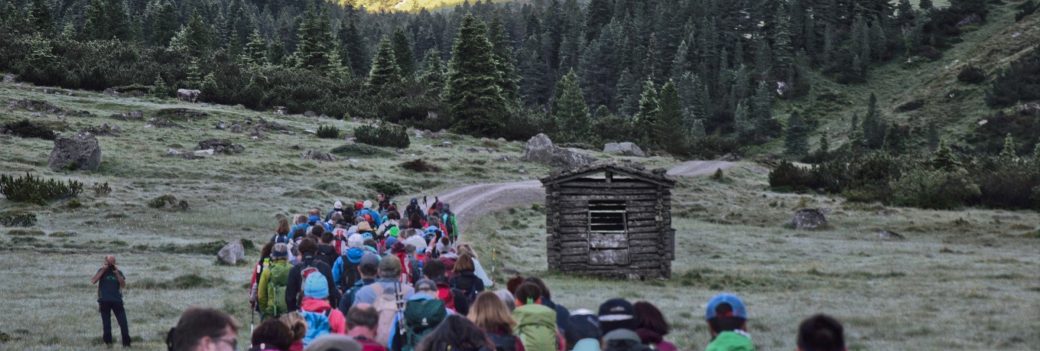For centuries people from the city have sought relaxation in nature. In the 19th century, Jews also discovered the mountains for themselves. Here too, however, they soon faced anti-Semitic discrimination.
A text by Danielle Spera (Translated by Bettina Reiter)
For centuries people from the city have sought relaxation in nature. The name from the Italian “prendere aria fresca” actually became the epitome of the summer recreational culture. This idea was also received with enthusiasm by Jews. The Semmering, the Gastein Valley, the Ausseerland, and many other rural areas in the Danube Monarchy were conquered. There, Jews naturally also wore the local costume, as shown by a legendary photo of Sigmund Freud and his daughter Anna from 1913. Folklore in the Alpine region was shaped by Jews and people of Jewish origin such as Konrad Mautner (1880–1924). Konrad Mautner came from a textile industrial family, but settled in Grundlsee and was one of the most important researchers in traditional costumes and folk art. The house in which his widow lived and his collections were confiscated by the National Socialists; later the heirs had to struggle for restitution. Konrad Mautner is mentioned in the chronicle of the village, however, the fate of his family and his collection are ignored.
Eugenie Goldstern (1884–1942) was also an important folklorist and cultural geographer. She was refused a position at the Folklore Museum in Vienna because of her origins. Nevertheless, she supported the museum and donated her extensive collection to it before she was deported and murdered in 1942.
Lilli Baitz (1874–1942) came from a family of doctors, but later had to auction her father’s sanatoriums and became a successful producer of traditional costume dolls. In 1942, she committed suicide in Bad Aussee just before her deportation. Theodor Herzl, Arthur Schnitzler, and Jakob Wassermann were regulars in Bad Aussee, and the rest of the Salzkammergut was also a popular place for summer relaxation for Viennese Jews, as was the Semmering. Arthur Schnitzler, Hugo von Hofmannsthal, Karl Kraus, Alfred Polgar, Peter Altenberg, Gustav Mahler, Franz Werfel, Stefan Zweig, Sigmund Freud, Ludwig Wittgenstein, Felix Salten, Robert Musil, and many others are closely connected to the Semmering in their artistic work. Here, it was above all the Südbahnhotel that was considered a symbol of a modern and artistically inspiring era. In the interwar period, the summer resort experienced its last heyday.
“Jews were soon forbidden to wear traditional costumes.“
From the early 1930s, Jews were pushed more and more vehemently from the resorts. The turning point of 1938 put an end to this culture as a whole. Jews were soon forbidden to wear traditional costumes. The Jewish (regular) guests were quickly expelled. Mansions and summer houses owned by Jewish families were expropriated and given to new owners; many villages immediately declared themselves judenfrei. The expulsion of the Jews meant the decline of many classic summer health resorts, from which many have not been able to recover to this day.
Jewish alpinism
Jewish mountaineers were not only attracted to the Alps in terms of summer relaxation. A person that should be mentioned in this respect is Paul Preuss (1886–1913), who climbed without technical aids and thereby established free climbing. Preuss was one of the most famous mountaineers of his time, but his principles were also controversial. With an article in the Deutsche Alpenzeitung, in which he made a plea for free climbing, he triggered the so-called „Mauerhaken-Streit“ (wall hook dispute). Preuss was of the opinion that one should only climb routes that one can climb without technical aid. The accusation was quickly raised that Preuss would drive young athletes to their deaths with his ideal of climbing without aids for ethical reasons. Preuss himself crashed in 1913 while climbing the Mandlkogel in the Dachstein Mountains. Another Jewish pioneer was Otto Margulies (1899–1925), who lost a leg on a mountain tour and still made a name for himself with first ascents after his accident.
Rudolf Gomperz (1878–1942), who came from an influential Ringstraße (a main road in Vienna) family, settled in St. Anton am Arlberg after suffering from malaria, where he became a pioneer of skiing and tourism. Together with the ski instructor Hannes Schneider and an hotelier, he founded a ski school and thus laid the foundation for ski tourism. Gomperz was involved in the ski associations and was eager to make skiing more popular. After the “Anschluss”, Hannes Schneider was arrested; after he was released, he emigrated to the USA. A work ban was imposed on Rudolf Gomperz. But he stayed in St. Anton, where he was exposed to constant harassment. In January 1942, he had to move to a Sammellager in Vienna. In May 1942, he was deported to Maly Trostinez near Minsk and a few days later he was shot. In St. Anton the history and above all Gomperz’ importance for skiing was „forgotten“. In 1995, after long persistent efforts, a memorial was erected for him. Felix Mitterer dedicated the play, „Kein schöner Land“, to the biography of Rudolf Gomperz.
Jewish mountaineering can also be observed on the basis of the membership numbers of the Vienna Alpine Club section “Austria”: one third were Jews. When an “Aryan paragraph” was passed in 1921, Jewish alpinists and non-Jewish friends founded their own Alpine Club section, the “Donauland” section. As early as 1924, the right-wing radical side of the association prevailed, and the “Donauland” section was excluded from the Alpine Association for flimsy reasons.
Kosher alpine tourism
Since the 1950s there has been a weak revival of the summer relaxation, which, however, cannot be compared to its heyday. Today, villages where kosher hotels have opened are experiencing a brisk influx of guests from the Jewish Orthodoxy, and Muslim guests often frequent hotels in the same villages that are tailored to their needs. In Saalbach-Hinterglemm or Serfaus, people are proud of the many Jewish-Orthodox guests who even come from New York or Australia. To find a supermarket with a well-stocked kosher department in a mountain village in the middle of the Alps is no longer a surprise – on the contrary, it is part of everyday life there too.
Information on the author: Danielle Spera is director of the Jewish Museum Vienna. Before that, she was an ORF journalist and presenter. She studied journalism and political science.








